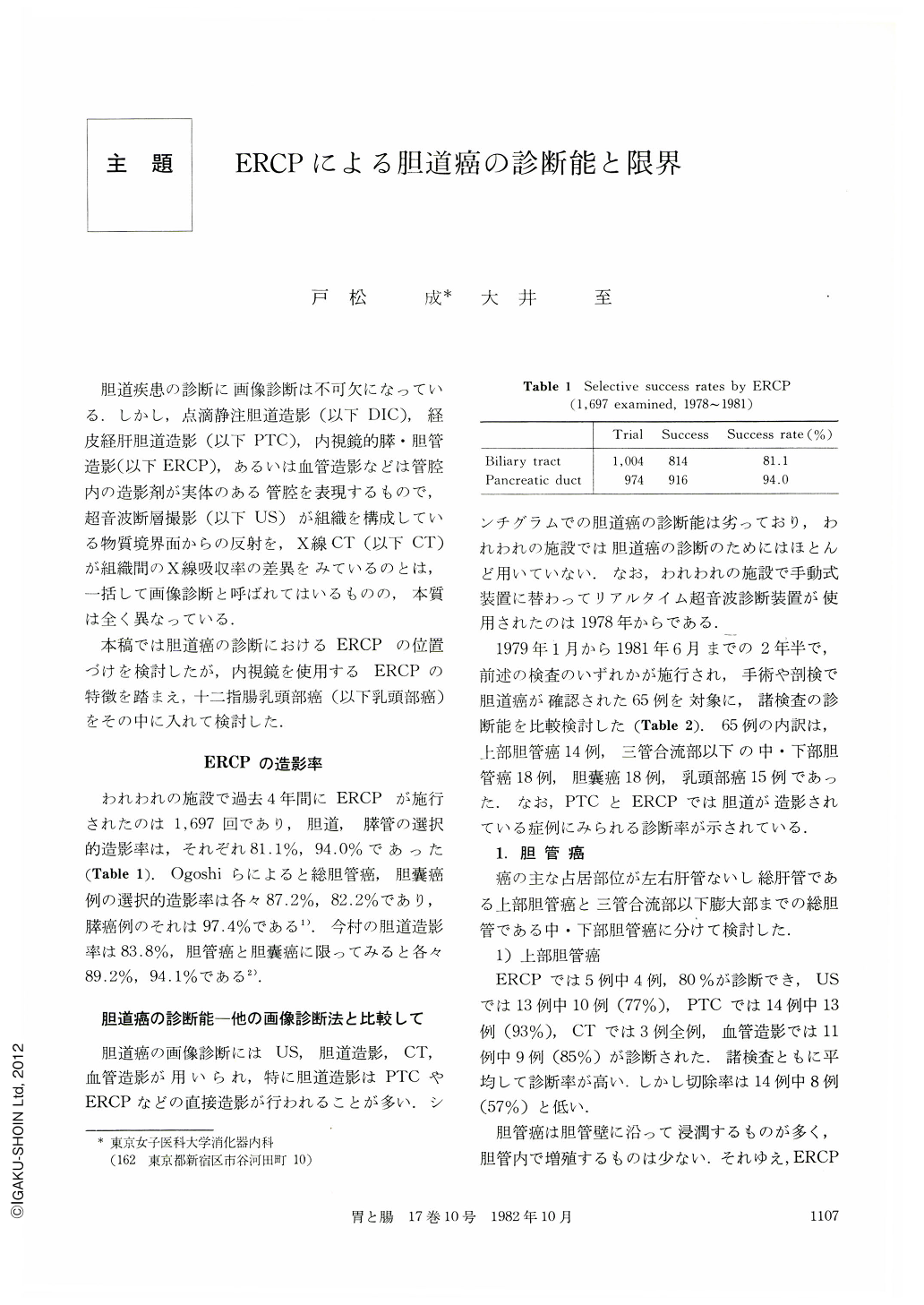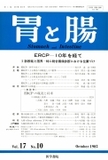Japanese
English
- 有料閲覧
- Abstract 文献概要
- 1ページ目 Look Inside
胆道疾患の診断に画像診断は不可欠になっている.しかし,点滴静注胆道造影(以下DIC),経皮経肝胆道造影(以下PTC),内視鏡的膵・胆管造影(以下ERCP),あるいは血管造影などは管腔内の造影剤が実体のある管腔を表現するもので,超音波断層撮影(以下US)が組織を構成している物質境界面からの反射を,X線CT(以下CT)が組織間のX線吸収率の差異をみているのとは,一括して画像診断と呼ばれてはいるものの,本質は全く異なっている.
本稿では胆道癌の診断におけるERCPの位置づけを検討したが,内視鏡を使用するERCPの特徴を踏まえ,十二指腸乳頭部癌(以下乳頭部癌)をその中に入れて検討した.
We studied and discussed diagnostic ability and limitation of ERCP on biliary tract cancer by comparing with other diagnostic imaging modalities. Studied materials were 65 cases of biliary tract cancer from January 1979 to June 1981, and results obtained were as follows:
Although diagnostic ability of ERCP on gallbladder cancer was unsatisfactory, it was superior to other diagnostic imaging modalities on cancer of the lower portion of the bile duct and papilla of Vater, which have high resectability indicating ERCP is a clinically useful method. To make an early diagnosis of biliary tract cancer, it is important to decide what kind of cases should have US screening study and then to have ERCP for qualitative diagnosis.
Our basic approach for diagnosing biliary tract diseases, including cancer of the biliary tract, is to perform US study first, then to select either or combination of the following tests according to the results: namely DIC ERCP and PTCD. Especially for the biliary tract cancer, we further perform CT and angiography to know a range of its invasion, then to decide whether it has operative indication or not.
ERCP is indispensable to make a diagnosis of anomalous connection between the pancreatic and biliary ducts and has great input on diagnosis and prophylaxis of the biliary tract cancer which could be highly associated with the anomalous connection.

Copyright © 1982, Igaku-Shoin Ltd. All rights reserved.


